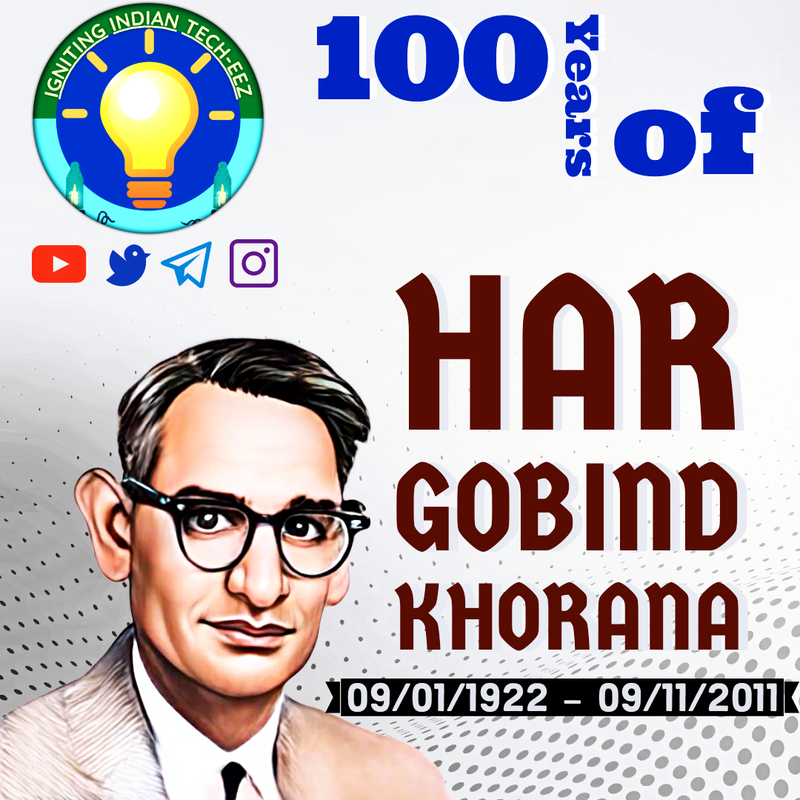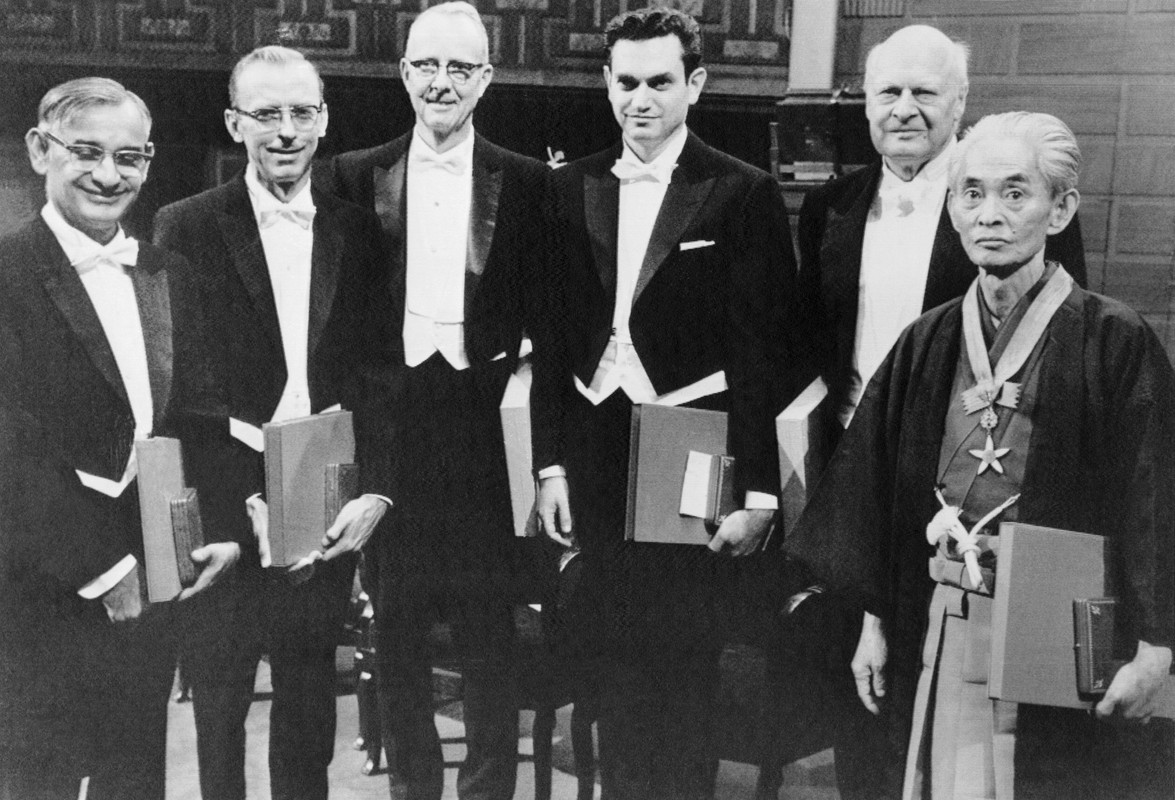Har Gobind Khorana
Har Gobind Khorana
"Although poor, my father was dedicated to educating his children and we were practically the only literate family in the village inhabited by about 100 people."
- Har Gobind Khorana

Har Gobind Khorana was an Indian American biochemist. He shared the 1968 Nobel Prize for Physiology or Medicine with Marshall W. Nirenberg and Robert W. Holley for research that showed the order of nucleotides in nucleic acids, which carry the genetic code of the cell and control the cell's synthesis of proteins.
Early Life and Education
Khorana was born to Krishna Devi Khorana and Ganpat Rai Khorana in Raipur, a village in Punjab, British India in a Punjabi Hindu family. He did his schooling from D.A.V. (Dayanand Anglo-Vedic) High School in Multan, in West Punjab.
He studied at the Punjab University in Lahore, with the assistance of scholarships, where he obtained a bachelor's degree in 1943 and a Master of Science degree in 1945. In 1945, when he moved to England to study organic chemistry at the University of Liverpool on a Government of India Fellowship. He received his PhD in 1948. The following year, he pursued postdoctoral studies at ETH Zurich in Switzerland. He stayed in Cambridge from 1950 until 1952. He moved to Vancouver, British Columbia, with his family in 1952 after accepting a position with the British Columbia Research Council at University of British Columbia.
In 1960 Khorana accepted a position as co-director of the Institute for Enzyme research at the Institute for Enzyme Research at the University of Wisconsin at Madison. He became a professor of biochemistry in 1962.
The Nobel Research and After
During his tenure at University of Wisconsin, he completed the work that led to sharing the Nobel prize with Marshall W. Nirenberg and Robert W. Holley for their interpretation of the genetic code and its function in protein synthesis". Har Gobind Khorana made important contributions to this field by building different RNA chains with the help of enzymes. Using these enzymes, he was able to produce proteins. The amino acid sequences of these proteins then solved the rest of the puzzle. Their Nobel lecture was delivered on 12 December 1968.

Khorana was the first scientist to chemically synthesize oligonucleotides. This achievement, in the 1970s, was also the world's first synthetic gene. In later years, the process has become widespread. Today, Khorana's invention(s) have become automated and commercialized so that anyone now can order a synthetic oligonucleotide or a gene from any of a number of companies. One merely needs to send the genetic sequence to one of the companies to receive an oligonucleotide with the desired sequence.
A side benefit of Khorana’s research, is that his team accidentally discovered the way to amplify genetic material during the course of their work. This later was very useful in developing techniques that are now the basis of genetic testing (known as polymerase chain reaction or PCR).
After the middle of the 1970s, his lab studied the biochemistry of bacteriorhodopsin, a membrane protein that converts light energy into chemical energy by creating a proton gradient. Later, his lab went on to study the structurally related visual pigment known as rhodopsin.
Awards and Honours
- In 1978, Khorana was elected as Foreign Member of the Royal Society.
- In 2007, the University of Wisconsin–Madison, the Government of India (DBT Department of Biotechnology), and the Indo-US Science and Technology Forum jointly created the "Khorana Program". The mission of the Khorana Program is to build a seamless community of scientists, industrialists, and social entrepreneurs in the United States and India.
The program is focused on three objectives:
- Providing graduate and undergraduate students with a transformative research experience
- Engaging partners in rural development and food security
- Facilitating public-private partnerships between the U.S. and India
In 2009, Khorana was hosted by the Khorana Program and honored at the 33rd Steenbock Symposium in Madison, Wisconsin. - Khorana's other honours include:
- Louisa Gross Horwitz Prize from Columbia University and the Lasker Foundation Award for Basic Medical Research, both in 1969
- Golden Plate Award of the American Academy of Achievement in 1971
- Willard Gibbs Medal of the Chicago section of the American Chemical Society in 1974
- Gairdner Foundation Annual Award in 1980
- Paul Kayser International Award of Merit in Retina Research in 1987
Life Lessons that Inspire Many
Khorana’s motivation did not end with his winning the Nobel Prize at the relatively young age of 46. His scientific journey saw him tackle a few different problems across his lifetime.
An extremely hard-working man, Khorana spent long hours in the lab and rarely took holidays. Once, he had gone without a vacation for 12 years! A self-effacing and humble human being, Khorana’s willingness to give credit to others is amply reflected in his Nobel lecture.
In good academic tradition, his students became like family, many of them going on to achieve fame in their own right; with one of them going on to win the Nobel Prize as well.
A teacher himself, Khorana was a great educationist who has worked immensely to make education accessible to all. We all should understand this as our mutual goal to make "Education accessible to all". Just like Khorana has made all Indians proud, we all should thrive to make our motherland proud in all spheres of life. On the 100th Birth Anniversary of Har Gobind Khorana, let us all try to popularise this inspirational story of his to people all over the country.
If a boy from the only literate family of 100 people in rural Punjab could pull it off 80 years ago, surely we have a 100 Khoranas in our midst – waiting to find their place in the scientific spotlight!
Nice and Informative! 👍👌
ReplyDelete